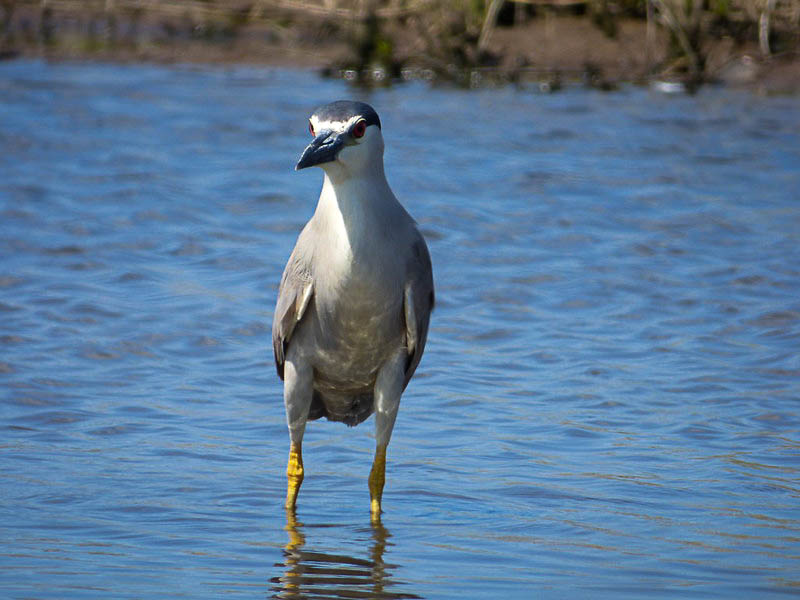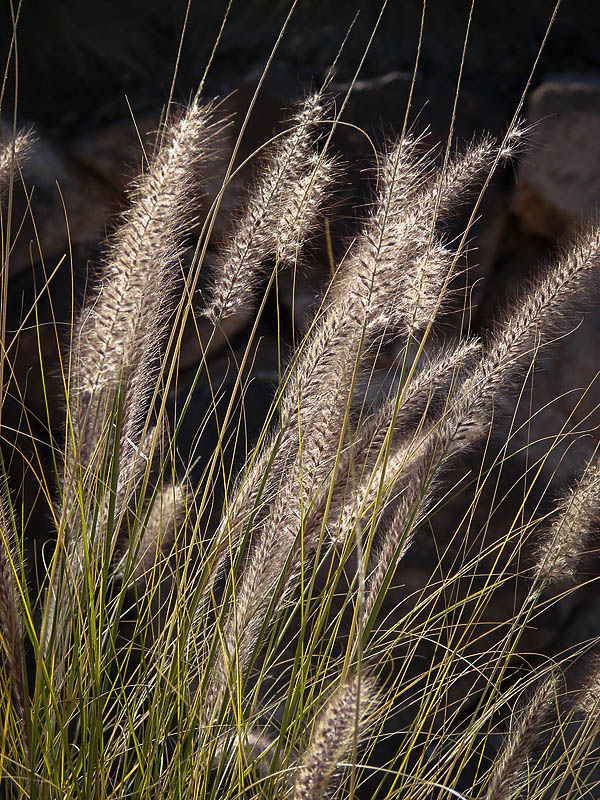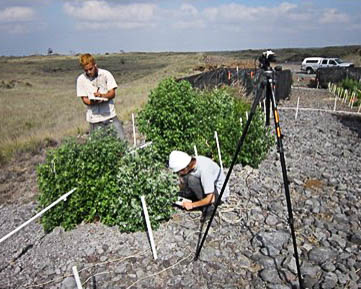
ʻAukuʻu 
ʻAlae keʻokeʻo 
Aeʻo 
Kealia Pond National Wildlife refuge is home to endangered plants and animals, but wildfire threatened the refuge in 2019. Trees in the background were burned in the flames.
A few hundred feet from the traffic of North Kīhei road, native dragonflies swoop and dive, snatching their food mid-flight. The endangered aeʻo (Hawaiian stilt) and ʻalae keʻokeʻo (Hawaiian coot) probe the mud and vegetation for small shrimp while an ʻaukuʻu (black-crowned night heron) stalks fish for dinner. The coastal strand, salt marsh, and wetlands at Keālia Pond National Wildlife Refuge are thriving, thanks to the hard work of dedicated staff and volunteers who remove invasive plants, fence out feral animals, and plant native species in this 700-acre refuge. But decades of protection and restoration efforts almost disappeared in a puff of smoke.
In July 2019, 25,000 acres of central Maui burned in a series of brushfires that shut down roads and isolated communities as firefighters and helicopters worked through the night to put out the blaze. The flames burned right up to the edge of the Refuge, singeing trees.
Fire poses one of the greatest threats to restoration projects, particularly in dry, arid environments like South Maui. Hawaiian ecosystems and native flora are not adapted to fires – which are mostly human-caused. Invasive plants, such as fountain grass (Cenchrus setaceum), can fuel fire cycles by growing quickly and leaving behind piles of dry biomass, then germinating rapidly after a wildfire. Nonnative buffel grass and red top natal grass serve as kindling on Maui. With global warming, drought periods are predicted to become more common, fostering the conditions in which fires start and spread.

Researchers are testing strategies in Hawaiʻi to limit the spread of wildfires in areas dominated by fire-promoting grasses. Green fire breaks – strategically planted strips of vegetation — have been effectively used in the continental U.S. as a complement to traditional firefighting methods. Water-rich and inflammable plants can help deprive wildfires of fuel, while also serving as habitat for other native species and a seed source for restoration projects.
“Greenstrips planted with natives can give added value to conservation areas,” explains Susan Cordell, a research ecologist with the US Forest Service and director of the Pacific Fire Exchange, is exploring how this technique can be used in Hawaiʻi with some of the native plant species used in dryland restoration. She evaluated several different species for their flammability and resistance to invasion – looking for ones that won’t allow fire-promoting grasses like fountain grass to take over. Her findings are offering restoration programs a host of options for the use of green fire-breaks.
ʻĀweoweo (Chenopodium oahuensis), a low-growing shrubby plant with a high-water content, stood out for its lack of flammability and resistance to invasion from fountain grass. The small glossy-leaved naio (Myoporum sandwicense) was also a contender due to its inflammability
“This isn’t a silver bullet,” cautions Cordell. “It’s just one tool in the tool-box.”
Bands of native shrubs could add a protective ring around the birds and their habitat at Keālia Ponds.

On Hawaii Island, Cordell and her team evaluated native plants’ suitability for use as a firebreak based on their resistance to invasion and lack of flammability. Photo courtesy of Susan Cordell. 
ʻAweoweo is a drought-tolerant native that could be a good plant for firebreaks. Photo by Forest and Kim Starr 
Naio was resistant to burning, indicating it may also be a good planting option. Photo by Forest and Kim Starr
Expand your knowledge about wildfires in the Hawaiian Islands: www.pacificfireexchange.org/hawaii. Learn more about Keālia Ponds National Wildlife Refuge: www.fws.gov/refuge/Kealia_Pond/.
Explore volunteer opportunities on the Refuge by contacting Keālia Pond NWR Visitor Services Manager, Courtney Brown at courtney_brown@fws.gov.
Lissa Strohecker is the public relations and education specialist for the Maui Invasive Species Committee. She holds a biological sciences degree from Montana State University. Kia’i Moku, “Guarding the Island,” is prepared by the Maui Invasive Species Committee to provide information on protecting the island from invasive plants and animals that can threaten the island’s environment, economy, and quality of life.
This article was originally published in the Maui News on July 11, 2020 as part of the Kia‘i Moku Column from the Maui Invasive Species Committee.
Read more Kiaʻi Moku articles
